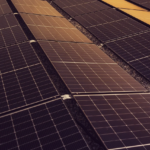 Are you thinking of getting your first body piercing? I’m sure that you’ve heard of various body piercing myths that make you want to reconsider the decision.
Are you thinking of getting your first body piercing? I’m sure that you’ve heard of various body piercing myths that make you want to reconsider the decision.
The body piercing business within the US has a market size of $516 million in 2021, citing its popularity. Body piercing is a common form of body modification, as people seek to enhance their beauty. Regardless of where you have a piercing, it’s a bold decision, which is why it matters to you.
Research is a standard prerequisite before having a body piercing, but you might get false facts. The body piercing myths are passed along by word of mouth or the internet, and they can be damaging. It’s essential to verify such information, so that the process can be a lot smoother.
If you’ve heard some myths and want to know if they’re true, this article is for you. We debunk the most common body piercing myths that exist today here.
Applying Ointment Helps With Healing
Although ointments are great for the skin, they don’t work well with an open wound.
Ointments constitute various irritants that can make healing a challenge. There’s also the possibility of dust and bacteria sticking on the ointment. As a result, they’re unfit for use within your body, especially on a piercing.
The impurities on ointments infect the piercing. Thus, the results can be unimpressive. Applying ointment, therefore, on a body piercing doesn’t help with the healing.
Ear Piercings Are Unproblematic
If you think that you’re in a safe zone by getting an ear piercing, you’re entirely wrong. An ear-piercing doesn’t mean you should slack off on your aftercare instructions.
Let’s agree; ear piercings seem like no big deal compared to other types of piercings. However, like any other piercing, they need the proper care to heal properly. You wouldn’t want to end up with a festered wound on your ear, right?
Ear piercings can be problematic, going by the number of reported ear-piercing complications. You, therefore, should focus on aftercare to let it heal nicely.
Unusual Piercings Tend to Heal Slower
Are you thinking of having a quirky piercing? Consider going through by all means. Don’t let the thought that they’ll heal slower hold you back.
There’s the perception that unusual piercings take longer to heal. Such concerns are unfounded. The healing period is almost standard for all piercings with the right care.
Genital piercings, for instance, can heal faster since there’s a lesser chance of infection. The area is covered with clothing, offering the piercing some extra protection.
Jewelry Twisting Prevents It From Getting Stuck
You might have heard of jewelry sticking on a new piercing, and it’s concerning. However, twisting isn’t the answer to prevent jewelry from getting stuck.
Twisting jewelry doesn’t help with the piercing’s healing. In fact, it aggravates the wound by creating gaps for bacteria and infection. You thus run the risk of getting irritation by moving the jewelry.
It’s advisable to use a wet Q tip to clean the buildup off your jewelry as the piercing recovers. You then should check that all ends are tight to avoid the entry of bacteria.
Piercing Guns Are the Most Ideal
Maybe you’re the person who loves a quick piercing to eliminate pain, which makes guns sound perfect. However, piercing guns are far from ideal compared to other ear piercers.
Piercing guns are made of plastic that is hard to sanitize. You, therefore, risk getting an infection, which can be a nightmare for you.
Piercing guns use blunt force to insert the jewelry, which can be mighty uncomfortable. The jewelry used also doesn’t leave enough room for swelling, which is terrible for your piercing. Piercing guns are thus far from ideal; say no to them!
Piercing experts prefer the use of a hollow needle instead of piercing guns. You’ll find the experience intriguing, and better still, you enjoy excellent results.
Nipple Piercings Affect Breastfeeding
The correlation between nipple piercing and breastfeeding issues is hugely unfounded. However, it is a common myth that instills fear in women, making them shy away from nipple piercings.
Nipple piercings don’t affect breastfeeding in any way. In fact, some cases suggest a lactation flow increase due to such piercings. However, this fact is not proven, but can be relative from one mother to another.
It’s not advisable to pierce your nipples during breastfeeding, as it increases the risk for infection. When breastfeeding, remove the jewelry and clean your nipple well to keep it healthy.
All Piercing Parlors Are Equal
Where you’re planning to get the body piercing will determine the outcome. Professionals are all over the market, but not all piercing parlors are best for you.
The piercing industry is hugely unregulated, making entry easy for unqualified personnel. It’s thus not advisable to walk into your local tattoo parlor and get the piercing.
Run a background check on the piercing parlor before booking an appointment. A great piercing parlor will guarantee you the best ear piercings.
MRI Machines Pull Out Body Piercings
MRI machines, although powerful, don’t have the ability to rip out your body jewelry. The effect relies on the jewelry type on your piercings because of the magnetic reaction.
Go for high-quality body jewelry for your body piercings, since there’s no magnetic reaction. You can find high-quality jewelry at bodypiercejewelry.com to avoid discomfort during your MRI scan.
Numbing Helps With Pain During Piercing
If you’re looking forward to skipping the pain, this may come as a total bummer. Numbing isn’t encouraged during the piercing procedure.
The body piercing process is fast and easy, and you should take the pain. Therefore, the numbing creams and anesthetics don’t belong within the piercing room.
Avoid These Common Body Piercing Myths That Exist Today
The body piercing experience is always better when you have the proper knowledge. The above guide debunks some common myths that exist today. If you want the best outcome, you should choose high-quality jewelry for the best result.
If you enjoyed reading this article, you’d love our other blog posts. Check them out today!



